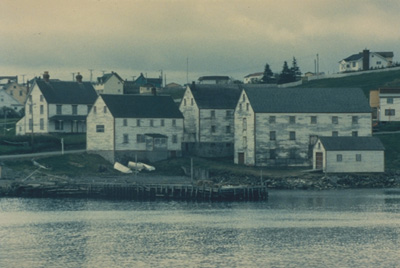Fishing Industry on the East Coast National Historic Event
Battle Harbour and Bonavista, Newfoundland and Labrador

View of Ryan Premises
(© Parks Canada / Parcs Canada, 1989)
Address :
Battle Harbour and Bonavista, Newfoundland and Labrador
Recognition Statute:
Historic Sites and Monuments Act (R.S.C., 1985, c. H-4)
Designation Date:
1975-11-28
Other Name(s):
-
Fishing Industry on the East Coast
(Designation Name)
Research Report Number:
1987-A02, 2009-SDC-CED-074
Importance:
Most important industry in development of Atlantic provinces
Plaque(s)
Existing plaque: Battle Harbour, Newfoundland and Labrador
From time immemorial, the waters off Labrador have yielded rich harvests. By the 1540s, Aboriginal peoples were joined by Basque fishers and whalers. Other Europeans and colonials also came to exploit the abundant marine resources, including cod, salmon and seals. A British migratory fishery, born in the 1760s, was gradually superceded in the 19th century by a resident fishery and by a Newfoundland-based cod fishery. Battle Harbour, long preeminent among coastal communities, eloquently evokes more than two centuries of history in the Labrador fishery.
Existing plaque: Ryan Premises National Historic Site of Canada, Bonavista
Marine resources were critical in shaping Atlantic Canada's human history. Aboriginal peoples fished here before the 16th century, when European mariners created a thriving international trade based on cod. In Newfoundland and Labrador, the bounty of the sea gave rise to hundreds of coastal communities (outports) and a distinctive maritime culture. Located in Bonavista, historically a prolific fishing community, the James Ryan premises is one of the last surviving examples of a 19th century mercantile complex involved in the inshore, seal and Labrador fisheries.